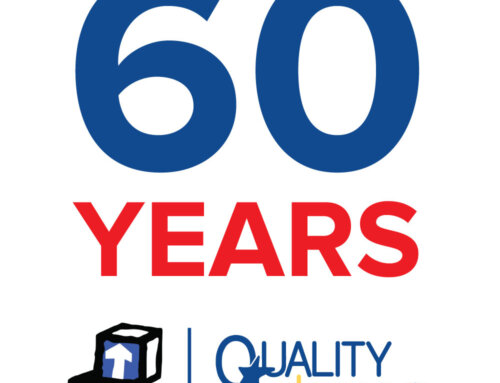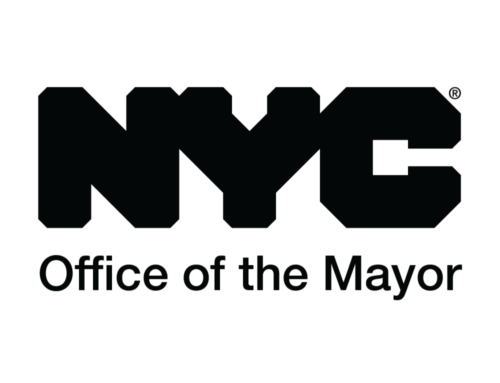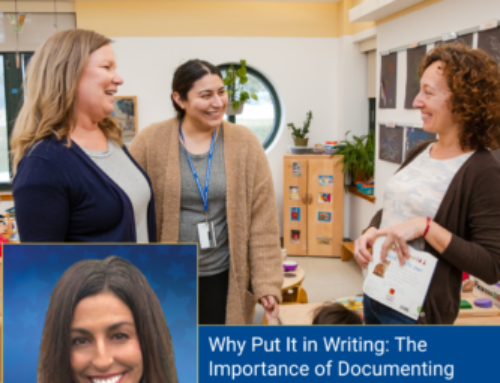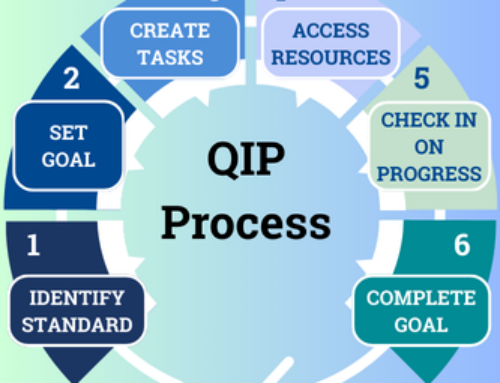
By: Rachel Zielinski, Quality Improvement Specialist, Finger Lakes Region
March is National Reading Month, a celebration that encourages reading for all ages and promotes reading as a key feature for overall learning, social-emotional, and professional development. Reading is an integral part of early childhood cognitive development, building relationships, fostering language and vocabulary development, and establishing critical thinking skills and beginning concepts of print.
Child growth and development, a core competency area in the Core Body of Knowledge, includes core competencies such as supporting children’s language, more specifically reading aloud to children daily. On March 2, the National Education Association brought reading to life with Read Across America, an annual reading event that helps motivate children to read, brings the joys of reading to students of all ages, and makes all children feel safe, valued, and welcome. With the growing need for schools and libraries to include and promote diverse books, the theme of Read Across America Day has shifted from Dr. Seuss to diversity: ensuring book choices that promote “windows and mirrors” are available to all children and families – not just on one day, but throughout the entire year. Windows allow readers a way to see the world through the book, while mirrors allow a way to see ourselves and explore the reflection.
When engaged in QUALITYstarsNY, programs may conduct a self-assessment of their classrooms or learning environment using an Environmental Rating Scale tool. Both the Family Child Care Environment Rating Scale Third Edition and the Infant/Toddler Environmental Rating Scale Third Edition’s subscale language and books rates staff and provider use of books with children, giving an excellent rating to an infant/toddler classroom or home environment that uses books informally several different times during the three-hour observation. This can be shown by helping an infant turn a page or asking a toddler developmentally appropriate questions about the book.
The Early Childhood Environmental Rating Scale Third Edition subscale language and books item 15, “encouraging children’s use of books,” gives an excellent rating to a preschool room that has at least five books that relate to current classroom activities or themes. These five books must be easily observed and accessible to the children as well as be displayed in a manner that encourages their use, i.e. not crowded on a bookshelf or stacked so covers cannot be seen. In addition, at least 15 books total are accessible to the children throughout the day and should include fantasy and factual titles. Each tool also considers book titles when assessing the Activities Subscale item “promoting acceptance of diversity.” For a good to excellent score, all programs should have books that address race, culture, age, ability, and gender roles accessible throughout the day among other materials that exemplify diversity.
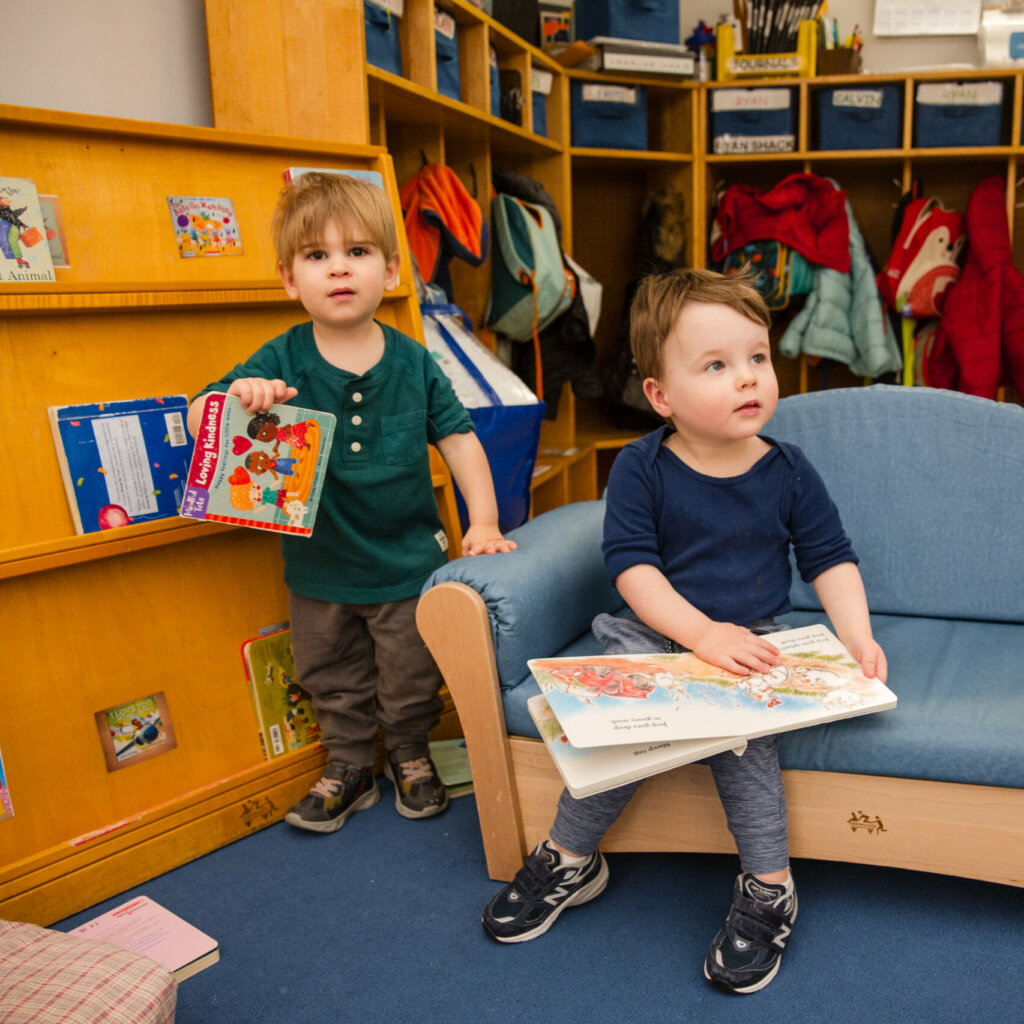
QUALITYstarsNY programs also strive to achieve goals that increase the quality of their program and practices, such as completing a self-assessment of cultural competence and applying Standard FIS 8 (Family Involvement & Support). The intention of this Standard is that the program is actively working to improve its cultural and linguistic competency so that it can support and work with diverse families. Some reflections included in Georgetown University’s National Center for Cultural Competence self-assessment for early childhood programs asks the program leaders to respond to the following statements:
“I ensure that the book/literacy area has pictures and storybooks that reflect the different cultures of children and families served in my early childhood program or setting.”
“I read a variety of books exposing children in my early childhood program or setting to various life experiences of cultures and ethnic groups other than their own.”
“When such books are not available, I provide opportunities for children and their families to create their own books and include them among the resources and materials in my early childhood program or setting.”
Take a moment to reflect on these statements. Is your initial response frequently, occasionally, or rarely to never? How can you shift your response to better support the staff, children, and families in your program?
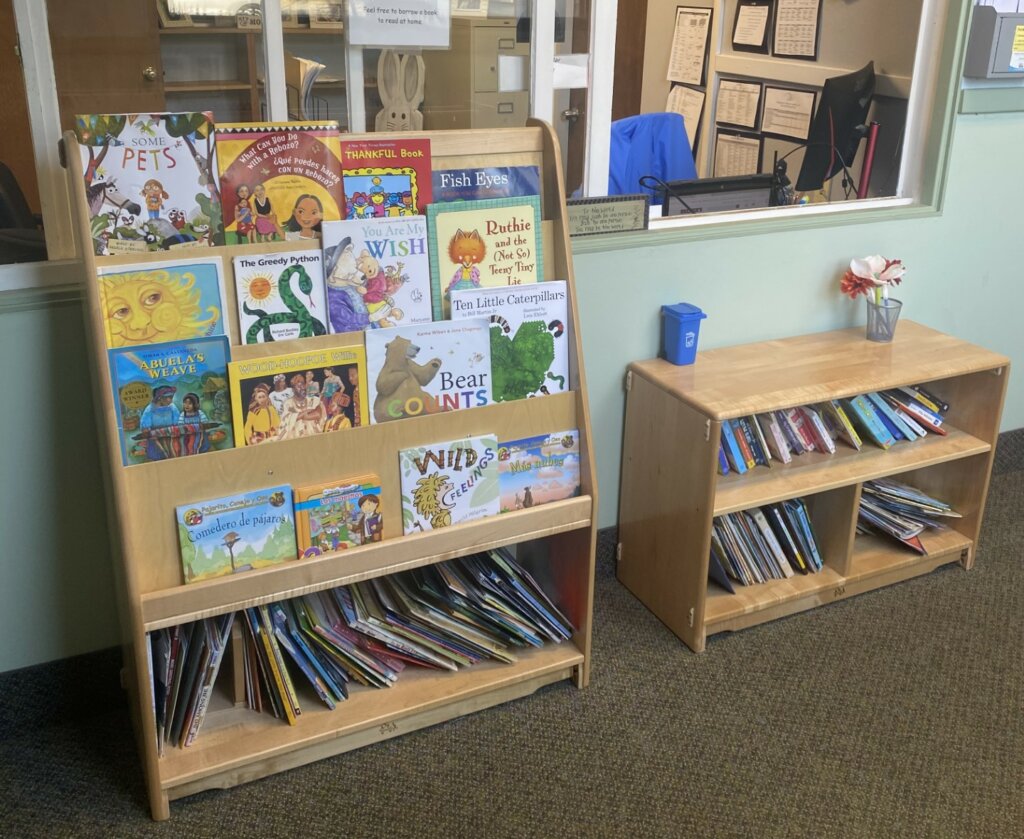
Lending Library at Imagination Childcare Academy in Rochester
Children and families can stop at the lending library on their way in or out of the center to take books home to explore. Erin Medlar, program leader, makes sure books are offered that are developmentally appropriate and include diversity.
Tying diverse books and reading into your program’s daily routine or next upcoming family event offers ways to weave rich reading and storytelling experiences into your program and meet QUALITYstarsNY Standards for Family Involvement & Support FIS3/FIS4: “Program offers volunteer opportunities for families, such as help with field trips and opportunities to share talents and expertise.” Asking guest readers to attend your events or join the classrooms for a read-aloud or storytelling visit can extend the love of reading to all children and their families. Parents that cannot come in during the day can join virtually or send a recording of a story for the children to listen to.
Other ideas include hosting a book exchange or opening a lending library for families to borrow books to take home for the night or over the weekend. Local libraries can offer support in choosing culturally competent books for the children enrolled in your program. Encourage families to visit their local library, sign up for a library card, and check out books that pair with the theme or study that their class is exploring. The local libraries also offer family fun activities that can help to strengthen the love of learning and reading.

